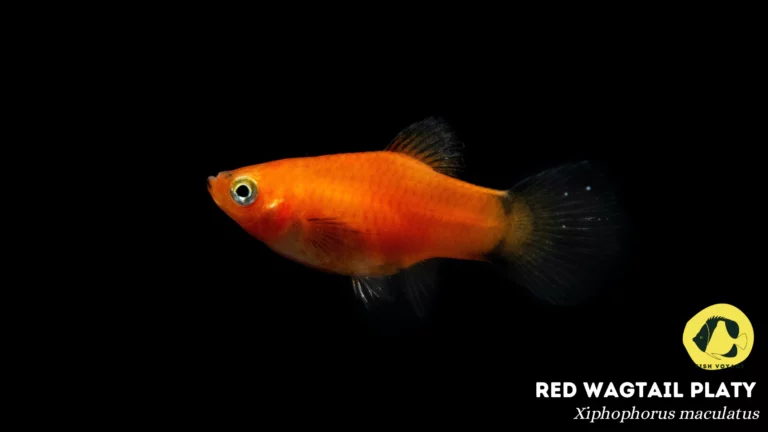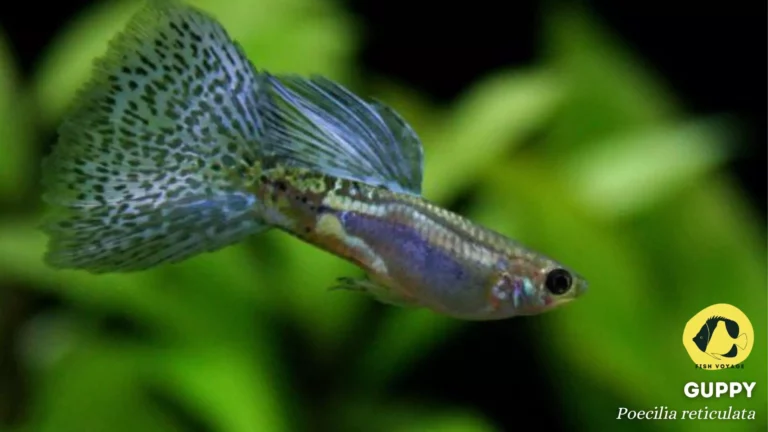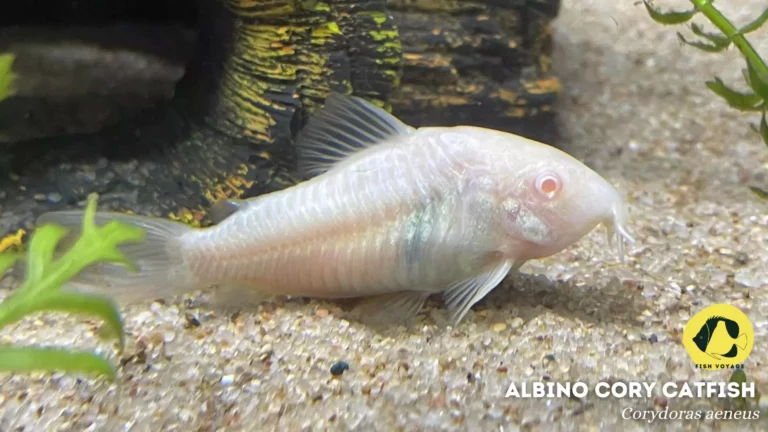Natural Ways To Treat Internal Parasites In Fish

In the intricate ecosystem of aquariums and fishkeeping, the presence of internal parasites poses a pervasive challenge for aquatic enthusiasts. Internal parasites, ranging from nematodes to protozoans, are surprisingly common afflictions among fish, impacting their overall well-being. Recognizing the importance of addressing these parasites is paramount for ensuring the health and longevity of our aquatic companions. Left unchecked, internal parasites can lead to a cascade of detrimental effects, compromising the immune system, hindering growth, and even proving fatal in severe cases. In this article, we delve into natural and effective ways to treat internal parasites in fish, shedding light on holistic approaches that prioritize the vitality of our underwater friends.
Common Internal Parasites in Fish
Nematodes (Roundworms)
- Description: Nematodes are microscopic, cylindrical worms that often affect fish intestines.
- Symptoms: Look out for bloating, weight loss, and abnormal swimming behavior.

Trematodes (Flukes)
- Description: Trematodes are flatworms that can attach to fish gills or internal organs.
- Symptoms: Watch for excessive mucus production, respiratory distress, and lethargy.

Protozoans (e.g., Ichthyophthirius, Hexamita)
- Description: Protozoans are single-celled organisms causing diseases like Ich and Hexamita.
- Symptoms: Keep an eye on white spots, skin inflammation, and changes in feces.

Cestodes (Tapeworms)
- Description: Cestodes are segmented worms found in the intestines of fish.
- Symptoms: Note changes in appetite, weight loss, and irregular feces.

Understanding the characteristics and symptoms associated with these common internal parasites is crucial for prompt identification and intervention. By recognizing these signs early on, aquarists can take proactive measures to safeguard the health of their aquatic companions, preventing the potential escalation of parasitic infections.
Natural Treatment Methods
Garlic as a Natural Antiparasitic
- Combatting Internal Parasites: Garlic, renowned for its natural antiparasitic properties, contains allicin, a compound known for its effectiveness against internal parasites in fish.
- Dosage Recommendations: To incorporate garlic into the fish’s diet, finely mince a small amount and mix it with their food. A recommended dosage is one to two minced garlic cloves per cup of fish food. This not only enhances palatability but also aids in the fight against internal parasites.
Pumpkin Seeds for Deworming
- Efficacy Against Parasites: Pumpkin seeds are a natural deworming agent, rich in cucurbitacin, which has been shown to expel internal parasites in fish.
- Administration Instructions: Crush fresh pumpkin seeds and mix them into a paste. Administer a small amount directly into the fish’s food or sprinkle it into the aquarium. Regular use can contribute to maintaining a parasite-free environment for your aquatic companions.
Herbal Remedies
- Specific Antiparasitic Herbs: Certain herbs like neem, wormwood, and thyme possess antiparasitic properties beneficial for fish health.
- Market Treatments: Explore herbal treatments available in the market, such as herbal medicated fish food or herbal additives for the aquarium water. These products can serve as effective supplements in combating internal parasites.
Maintaining a Clean Environment
- Importance of Clean Water: Clean water is fundamental in preventing and managing internal parasites. Regular water changes and proper filtration reduce the risk of parasitic infections.
- Hygiene Tips: Ensure a stress-free environment by maintaining optimal water parameters and providing suitable hiding spots. Additionally, quarantine new fish before introducing them to the main tank to prevent potential parasite introduction.
By incorporating these natural treatment methods, aquarists can not only address existing internal parasite issues but also adopt preventive measures to sustain a thriving and healthy aquatic community.
DIY Anti Parasitic Fish Food Recipes
Garlic-Infused Fish Pellets
- Ingredients: High-quality fish pellets, fresh minced garlic.
- Benefits: Garlic’s antiparasitic properties enhance the immune system and combat internal parasites.
- Instructions: Mix the minced garlic thoroughly with the fish pellets. Allow it to soak for a few minutes before feeding. This DIY remedy not only boosts the fish’s health but also entices them with a palatable treat.
Pumpkin Seed Flake Mix
- Ingredients: Fish flakes, crushed fresh pumpkin seeds.
- Benefits: Pumpkin seeds are rich in cucurbitacin, offering natural deworming benefits.
- Instructions: Crush pumpkin seeds into a fine powder and mix them with fish flakes. Feed this concoction to your fish as a regular part of their diet. The blend provides a tasty and nutritious solution for maintaining a parasite-free environment.
Herbal Medicated Gel Food
- Ingredients: Gel food base, neem or thyme extract, powdered wormwood.
- Benefits: Neem, thyme, and wormwood are known for their antiparasitic properties.
- Instructions: Combine the gel food base with neem or thyme extract and powdered wormwood. Shape the mixture into small pellets or cubes after mixing thoroughly. This DIY gel food offers a convenient way to administer herbal remedies to your fish, promoting overall health and resilience against internal parasites.
Creating these DIY antiparasitic fish foods not only allows for a tailored approach to your fish’s nutritional needs but also introduces natural elements to their diet, supporting their well-being in a holistic manner.
Prevention Strategies
Selecting Healthy Fish
- Choose Reputable Suppliers: Opt for reputable fish suppliers to ensure the acquisition of healthy fish, minimizing the risk of introducing internal parasites into your aquarium.
- Observation: Carefully observe the fish for any signs of illness, stress, or abnormal behavior before purchase.
Quarantine Procedures
- Isolate New Additions: Implement a strict quarantine protocol for new fish by placing them in a separate tank for observation.
- Duration: Quarantine should last a minimum of 2-4 weeks to monitor for any potential signs of internal parasites or other diseases.
- Treatment if Necessary: If symptoms arise during quarantine, treat the isolated fish before introducing them to the main tank.
Regular Water Changes
- Maintain Optimal Conditions: Conduct regular water changes to keep water parameters stable and prevent stress in fish.
- Detoxify the Environment: Use water conditioners to neutralize harmful substances, ensuring a healthy and parasite-resistant habitat.
Balanced Diet
- Nutrient-Rich Feeding: Provide a balanced and nutritious diet to boost the immune system of your fish.
- Variety in Diet: Introduce a variety of foods, including those with natural antiparasitic properties like garlic-infused or herbal fish foods.
Avoid Overcrowding
- Space Considerations: Avoid overcrowding the aquarium, as it can lead to stress and compromise the immune system of the fish.
- Regular Monitoring: Regularly assess the fish population to ensure it remains suitable for the tank’s size.
Routine Tank Maintenance
- Cleaning and Filter Maintenance: Regularly clean the tank, ornaments, and substrate to prevent the buildup of detritus and parasites.
- Filter Maintenance: Keep filters clean and well-maintained to ensure efficient water circulation and filtration.
By implementing these prevention strategies, fish enthusiasts can establish a robust defense against internal parasites, fostering a thriving and disease-resistant aquatic environment.
Conclusion
In conclusion, the proactive management of internal parasites is not only a responsibility but a commitment to the well-being of our aquatic companions. By adopting a holistic approach that encompasses preventive measures, vigilant quarantine procedures, and strategic care, fish enthusiasts can significantly reduce the risk of internal parasitic infections.
Prioritize Proactive Measures
Investing time and effort into preventive strategies such as careful fish selection, regular water changes, and a well-balanced diet is akin to building a strong fortress against the intrusion of internal parasites. These proactive measures lay the foundation for a resilient and flourishing aquatic community.
Quarantine Wisdom
The adage “prevention is better than cure” holds particularly true in the realm of fishkeeping. The meticulous implementation of quarantine procedures for new additions ensures that any potential threats are identified and addressed before integration into the main tank. This step not only safeguards existing inhabitants but also sets the stage for a harmonious coexistence.
In essence, the pursuit of a healthy aquatic environment involves a commitment to preventive practices, fostering a space where the threat of internal parasites is minimized. As stewards of these underwater ecosystems, our dedication to vigilance and thoughtful care ensures that our fish thrive in an environment that reflects the balance and serenity of nature.
Additional Resources
Reputable Books for Further Reading
- Manual of Fish Health: A comprehensive guide by Dr. Chris Andrews and Adrian Exell that delves into the intricacies of fish health, offering insights into disease prevention, including internal parasites.
- Fish Diseases and Disorders: Authored by Patrick T. K. Woo, this book provides a detailed exploration of fish diseases and disorders, their description, and effective treatment methods for maintaining a healthy fish environment.
- Fish Diseases and Medicine: Written by Stephen A. Smith, this illustrated guide serves as a valuable resource, covering a spectrum of fish diseases, including internal parasites, with practical advice on prevention and treatment, along with insights on effective medicines.
Relevant Forums for Further Discussion
- Tropical Fish Forum: An active online community where experienced aquarists and enthusiasts share insights on managing internal parasites and exchange practical tips for preventive measures.
- Aquarium Advice Community: Join discussions on internal parasites, preventive strategies, and treatment options. Engage with a community of aquarists who have hands-on experience in maintaining a healthy aquatic environment.
- Reddit’s Aquariums Community: A diverse platform for fishkeepers to discuss everything related to aquariums. Explore threads on internal parasites, seek advice, and connect with a global community of aquarists passionate about fish health.
These additional resources serve as valuable extensions of the information presented here, offering in-depth knowledge, expert perspectives, and real-life experiences. Whether through insightful books or vibrant online forums, the pursuit of understanding and managing internal parasites in fish is enriched by engaging with these reputable sources.
Frequently Asked Questions (FAQs)
1. What natural remedies effectively treat internal parasites in fish?
Natural remedies like garlic-infused fish food, pumpkin seed additives, and herbal treatments harness anti-parasitic properties, promoting fish health naturally.
2. How does garlic combat internal parasites in fish?
Garlic contains allicin, enhancing the immune system and acting as a potent anti-parasitic agent, providing an effective defense against internal parasites in fish.
3. Are there specific herbs known for anti-parasitic properties in fish?
Yes, herbs like neem, wormwood, and thyme exhibit anti-parasitic qualities, offering holistic benefits and contributing to the overall well-being of fish.
4. What DIY anti-parasitic fish food recipes can be prepared at home?
Easily prepare garlic-infused fish pellets, pumpkin seed flake mixes, and herbal medicated gel foods at home, ensuring a natural and nutritious diet for your fish.
5. What preventive measures reduce the risk of internal parasites in aquariums?
Proactive strategies include selecting healthy fish, employing rigorous quarantine procedures, maintaining optimal water conditions, and providing a well-balanced diet, collectively reducing the risk of internal parasitic infections in aquariums.






